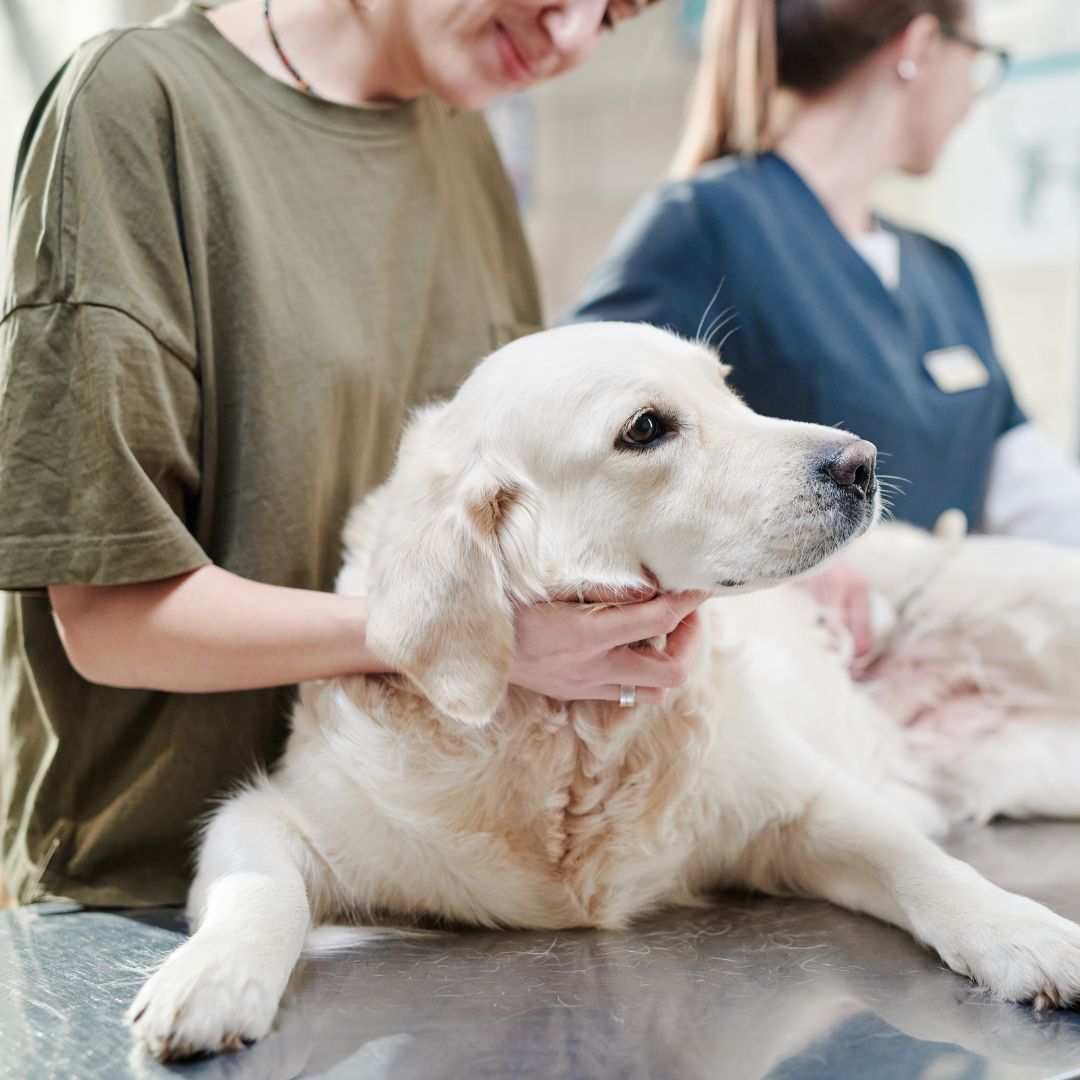First Visit Etiquette
Feel comfortable in knowing that Slade Veterinary Hospital has the combination of quality care and excellent service to meet all of your pet’s needs. Below is some information to help you and your pet prepare for their first visit.

First Visit Etiquette
The lobby area is divided into two seating sections one for our friendly canine patients and one for our more reserved canine or feline patients. We do ask that you kindly keep your dogs leashed at all times and that your cats be kept in carriers while in the lobby. If you or your pet are more comfortable waiting in an exam room, or out in your car, please do not hesitate to speak to one of our receptionists and we will do our best to accommodate special requests.
In preparation for your appointment, you will be asked to complete a New Patient Registration form, which may be submitted online in advance. If you prefer to complete your form at our office, please arrive 10-15 minutes before your appointment to ensure adequate time. All other forms, including those specific to reproduction and health certificates, may be accessed by clicking here.
Please bring your pet’s complete medical history, including vaccinations, prior lab work, and a list of diets and medications. You may email or fax this information to us prior to your visit so the veterinarian can review it. Lastly, we ask that you bring a list of questions or concerns for your veterinarian don’t hesitate to ask anything about your pet’s health and behavior.
While waiting, please explore the PetPourri shop, which includes a selection of treats, grooming tools, chew toys, and more! To learn more about what happens during the appointment, visit our wellness page! Also, don’t forget to visit our team page to read more about each of the veterinarians!
Our veterinarians are Fear Free Certified so that you and your pet have the most enjoyable and stress-free visit with us possible. We have developed a variety of recommendations for you based on our experiences during the pandemic and several ongoing studies. Please read our recommendations on how we can work together to improve your pet’s experiences at Slade Veterinary Hospital.
- Just like with training, being slightly hungry is good. If it is medically appropriate, reduce the amount of food your pet eats on the day of the veterinary visit. This can help prevent nausea during car travel as well as make the treats at the veterinary visit more appealing.
- There should be a treat bonanza. Although we have a variety of treats at Slade Veterinary Hospital, ideally, you should bring your pet’s favorite treats for the visit. An appropriate amount is 50 to 100 treats in tiny pieces the size of half a pea or one lick. (Cut up the treats if necessary to get an appropriate size.) We might not use all the treats, but it is better to have too many than not enough.
- If your pet has a favorite toy or grooming brush, please bring it with you. A familiar item may help your pet feel more relaxed. We may ask you to help distract your pet with this item during the visit.
- A towel or small bed that has been sprayed with a species-specific calming pheromone from home can be helpful. The most used pheromones are Feliway for cats and Adaptil for dogs. Another choice is lavender which has been shown to have a calming effect on dogs. For dogs, you can also use a bandana sprayed with the pheromone or lavender. Apply the spray 10 to 15 minutes prior to use. You can find these products in most pet stores, online, or at Slade Veterinary Hospital.
- Acclimate your pet to the carrier, crate, or seatbelt prior to your planned veterinary visit so that your pet can arrive at the hospital relaxed and happy. If your pet is prone to carsickness, please talk to us about medications. Being carsick is not conducive to a relaxed and happy visit!
- For cats and small dogs that use a carrier: Carriers should have two entry and exit points (top, side, and/or front), whether hard or soft-sided. Ideally, hard carriers should be able to be easily disassembled so that cats can stay at the bottom of the carrier if they are more comfortable there. Carry the carrier into the clinic supported on the bottom to prevent excess motion if possible so that your pet feels more secure.
- Provide your pet with an opportunity to relieve himself prior to leaving your home and when you get to the practice. Nothing escalates stress more than being unable to relieve oneself when needed. If there is a medical reason for you not to do this, we will let you know.
- Budget plenty of time to avoid being rushed. If you are stressed, your pet will also be stressed.
- If we have prescribed anti-nausea or anti-anxiety medications, please give them as prescribed. Talk to us if you feel that your pet will benefit from anti-nausea or anti-anxiety medications and we have not provided them.
- Call us when you get to the parking lot. We have found that dogs and cats prefer a quiet environment and are happier waiting in their car than in a busy waiting room. We will try to keep the waiting room time as short as possible for our patients.
- Let us know if there are any situations or procedures that are particularly stressful for your pet so that we can try to minimize these.
